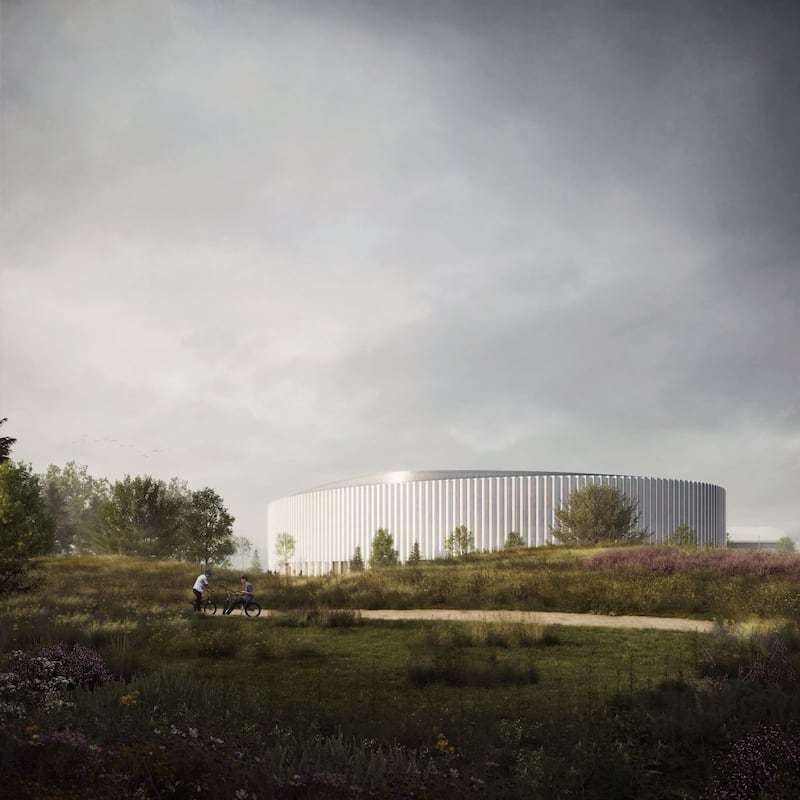Any master plan for the next two decades may sound more like a dream than a vision, particularly given our troubled history of sporting builds, although what is clear is the future direction the Sport Ireland Campus at Abbotstown wants to take.
It’s already come a very long way since, in 1999, PwC carried out a feasibility study for a national stadium on the site, the infamous ‘Bertie Bowl’, with an estimated cost that seemed to double each time it was calculated.
After the first proper build in 2003, the National Aquatic Arena, Fingal County Council granted planning permission in 2009 for the then National Sports Campus Development Authority to build a range of sporting facilities.
Many have now come, part of the Sport Ireland campus master plan for the next 15-20 years is to open more of the new and existing facilities to the public, and with that make it the home not just for high-performance Irish sport, but all Irish sport.
READ MORE
First among the new projects is the national velodrome and badminton centre, funding for that already allocated under the National Development Plan in October 2021, followed by a new village-type hub to include athlete accommodation and sporting offices, later a new museum of Irish sport, a community running track, a first national cricket stadium, and plenty of multistorey carparks too.
The go-ahead for the national velodrome and badminton centre was given back in May 2019, with a then budget of €15-€20 million, before Covid-19 helped get in its way. Now budgeted at around €60 million, it is hoped the 18-month build can begin in the third quarter of next year, a planning application has been lodged with Fingal County Council by Sport Ireland in August, with a decision expected in the coming weeks.
In all, the master plan projects will cost more than €100 million, over those next 15-20 years, though each will be subject to individual funding. Sport Ireland chief executive Dr Una May admitted too that nothing was set in stone.
“It’s important that you see this as a vision, a framework for what we plan for the campus in the future, not necessarily gospel,” she said.
“What we want to identify are the key, major significant parts of the infrastructure that we plan to build, and alongside that, we’ll have multiple small and medium-size projects every year. And they’re the ones which will reach to sports-specific venues across the whole campus.

“We plan to have at least one major project every year on the go, the velodrome and badminton centre is our next major project, we hope that will be kicking off next year.
“Then we’ll look to the next two significant parts of the plan, which is around athlete accommodation, and the office campus. That concept of a village in the centre of the campus is a really important part.
“We’re also trying to share that ethos and philosophy of it being a shared facility, for both high-performance and elite sport, but also for the community. And that cross-over is really special, and we believe unique in the world. And this ability to combine the two is really important to us, because they can be a little bit soulless, when you have a high-performance centre with elite athletes only.”
The velodrome and badminton centre is set for the Northern Sports Zone, adjacent to the National Indoor Arena, the new Sport Ireland village to the centre of campus, the Southern Parkland to eventually include the new cricket facilities. The master plan also includes improved access and the opening of two new entrances.
Minister of State for Sport Jack Chambers admitted it would be a costly exercise.
“When you take the number of projects combined, it’s most certainly in excess of €100 million, over a period of years,” he said, “when you’re investing in a world-class velodrome, athlete accommodation short and long stay, and building office accommodation for up to 900 people who work in sport, develop a museum for sport, making this the destination for sport, and continue to expand world-class facilities for our athletes.”
The completion of the new cricket stadium and cricket high-performance centre, alongside an athletics and cricket plaza, was not, Minister Chambers clarified, in any way linked to the 2030 T20 World Cup, when Ireland will share host duties with England and Scotland.
“We have identified space on the new master plan for a cricket facility, that will be subject to a business case and the usual process,” he said.
“But the awarding of the Cricket World Cup matches [in 2030] was very explicit that it wasn’t subject to a new facility. Obviously we’re ambitious in the master plan to advance a cricket facility, that’s something which will be advanced on in a business case, but the delivery of one is not conditional on Ireland hosting the World Cup in 2030, that was made explicit at the time.”
CEO May also added that a new cricket pitch can take a number of years to settle, and they are still considering the scope and scale, “because there will be early advance works to be done before we can go too far with that project”.
On a first museum of Irish sport, May said: ”It’s like building a cultural hub of the campus, potentially a venue where we could host visitors, with that the full history of Irish sport.”
















